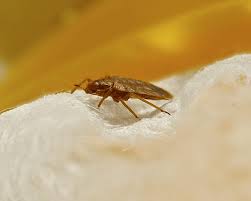
Bed Bugs , Call or Text on: 07342914987
Local Business
No Call Out Fee
(See us on facebook)

BUG TREATMENT FOR CRUISE LINERS

[contact-form-7 id=”9d270ab” title=”Contact form 1″]
The Problem with Bugs on Cruise Liners
When it comes to bugs on cruise liners, the issue often goes unnoticed until it becomes a full-blown problem. Passengers embark on their exotic vacation, blissfully unaware that they may be sharing their luxurious accommodations with unwanted guests such as bedbugs, cockroaches, or even mice. The confined space of a cruise ship offers bugs the perfect environment to thrive and multiply undetected. While cruise lines take certain measures to prevent infestations, the reality is that these pests can still find their way on board through luggage or ports of call.

For passengers, encountering bugs during what is supposed to be a dream getaway can quickly turn into a nightmare. Waking up covered in bites from bedbugs or coming face-to-face with cockroaches in their cabin can not only ruin the experience but also pose health risks. The close proximity of travelers and shared facilities create an ideal scenario for pests to spread throughout the ship rapidly. And while some companies do conduct regular inspections and take swift action when an infestation is discovered, others might prioritize maintaining their reputation over tackling the issue head-on.
Addressing this problem requires cruise lines to adopt effective bug treatment methods tailored specifically for these floating hotels. Traditional pest control methods like spraying insecticides may not be viable options due to potential health hazards and environmental concerns associated with them. Instead, newer approaches utilizing heat treatments or cold storage techniques have emerged as possible solutions for combating infestations without putting passengers’ wellbeing at risk.

In conclusion, recognizing and addressing the problem of
Health Risks Associated with Bug Infestations
Cruise liners are a popular choice for vacationers seeking relaxation and adventure on the open seas. However, an underlying concern that often goes unnoticed is the potential health risks that can come with a bug infestation on board. A recent report by BugBug Treatment for Cruise Liners revealed alarming statistics about outbreaks of pests like bed bugs and cockroaches aboard these floating resorts. These tiny intruders can wreak havoc on passengers’ health, causing allergic reactions, skin irritations, and even transmitting diseases.
One of the most significant threats posed by bug infestations on cruise liners is the spread of infectious diseases. Bed bugs are notorious carriers of pathogens such as bacteria and viruses, making them exceptionally dangerous in confined spaces like cabins or lounges where passengers gather closely together. Additionally, cockroaches are known to carry disease-causing bacteria such as salmonella and E.coli. With thousands of people sharing common areas and dining spaces on a daily basis, it’s no wonder that bug infestations present a serious health risk for cruise ship passengers.

Furthermore, insect bites can lead to severe allergic reactions in some individuals. People who are susceptible to allergies may experience symptoms such as swelling, itching, and difficulty breathing after being bitten by bed bugs or other insects found onboard cruise ships. This can not only be distressing for the affected individual but also jeopardize their overall well-being during what should be a carefree vacation experience.
In light of these health risks associated with bug infestations on cruise ships,
Prevention and Control Measures for Bug Infestations
When it comes to bug infestations, prevention is key. This holds true for all types of environments, including cruise liners. Bug infestations can easily occur on cruise ships due to the close proximity of passengers and the continuous flow of new guests. To prevent and control bug infestations on cruise liners, there are several measures that can be taken.

Firstly, regular inspections should be conducted by trained professionals to identify any signs of bugs or potential breeding areas. This includes checking cabins, common areas, and even luggage storage areas. Secondly, implementing strict cleanliness protocols is essential in preventing bug infestations from occurring in the first place. Regular cleaning with effective disinfectants and proper waste disposal play a crucial role in keeping bugs at bay.
Furthermore, crew members should receive proper training on identifying signs of bug activity and how to handle potential infestations swiftly and effectively. It is also important for cruise liners to have a well-defined action plan in place whenever a bug infestation occurs onboard. This plan should outline the steps to take for containment, treatment procedures using safe insecticides suitable for an enclosed environment like a ship.

By implementing these prevention and control measures proactively as part of their routine maintenance schedule, cruise liners can ensure a bug-free environment for their guests throughout their journey. Such diligent efforts will not only help maintain high hygiene standards but also preserve the reputation of the company as one that prioritizes guest comfort and safety above all else.
Effective Bug Treatment Methods for Cruise Liners
As the demand for cruise liners continues to soar, it is crucial for these floating cities to maintain a high standard of cleanliness and hygiene. One of the biggest challenges that cruise liners face is dealing with bugs and pests, which can not only ruin the experience for passengers but also tarnish the reputation of the entire company. Effective bug treatment methods are therefore essential for keeping these luxurious vessels bug-free.

One innovative bug treatment method that has gained popularity in recent years is heat treatment. Instead of relying solely on pesticides, heat treatment involves raising the temperature inside cabins and public areas to an extreme level that kills off bugs and their eggs. This method not only eliminates bugs effectively but also reduces the need for harmful chemicals, making it an environmentally-friendly option.
Another effective bug treatment method is prevention through regular inspections and maintenance. Cruise liners should invest in qualified pest control teams who can conduct routine checks to identify any signs of infestation before they become major problems. By implementing proper sanitation measures, regularly inspecting storage areas and waste disposal systems, and ensuring effective pest exclusion techniques are in place, cruise liners can effectively minimize the risk of bugs infiltrating their ships or spreading throughout passenger cabins.https://en.wikipedia.org/wiki/Huddersfield
In conclusion, handling bugs on cruise liners requires a vigilant approach that prioritizes prevention through regular inspections as well as efficient bug treatment methods like heat treatments. By implementing these strategies consistently, cruise companies can ensure a bug-free environment that will keep passengers happy and promote positive word-of-mouth about their services.